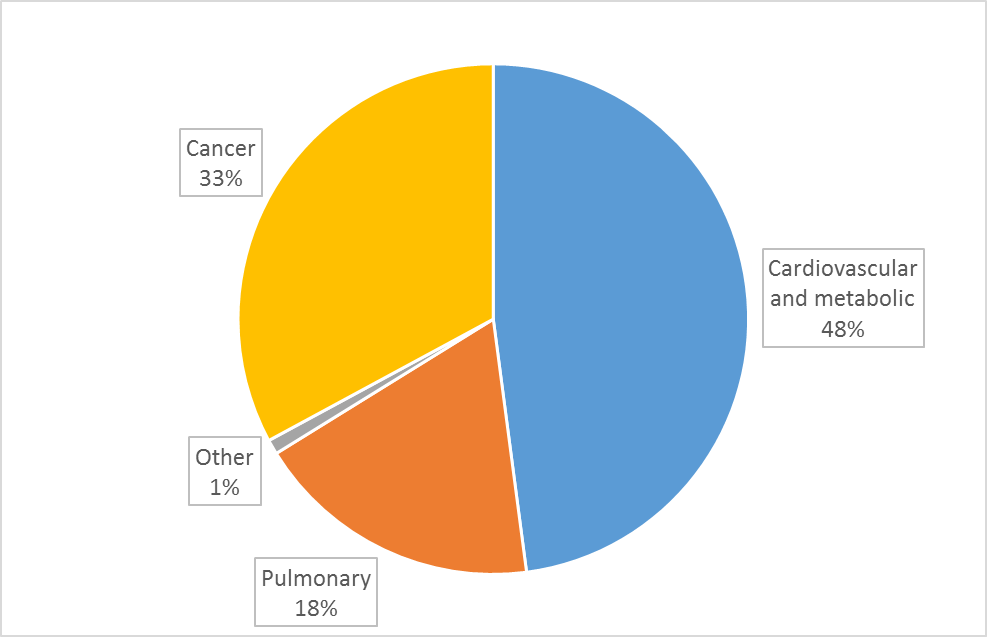August 17, 2017
Two recent papers demonstrate that flavors are an important reason that kids use cigarettes and e-cigarettes, supporting the importance of the kind of comprehensive ban on selling all flavored tobacco products, including menthol, that San Francisco passed and this is under assault by RJ Reynolds.
Charles J. Courtemanche and colleagues published “ Influence of the Flavored Cigarette Ban on Adolescent Tobacco Use” in American Journal of Preventive Medicine in which they analyzed data from the National Youth Tobacco Survey between 1999 and 2013. They found that following the ban on characterizing flavors in cigarettes included in the 2009 Family Smoking Prevention and Tobacco Control Act was followed by a substantial drop in the probability of youth being smokers and the number of cigarettes smoked.
August 13, 2017
The evidence that marijuana imposes important cardiovascular disease risks continued to grow with the recent publication of “Effect of marijuana use on cardiovascular and cerebrovascular mortality: A study using the National Health and Nutrition Examination Survey linked mortality file” by Barbara A Yankey and colleagues in the European Journal of Preventive Cardiology. It found that marijuana use was associated with more than a tripling of risk of death from hypertension.
These effects are likely moderated by the same kinds of effects on blood vessels that tobacco smoking and e-cigarettes have; marijuana appears to be even worse than tobacco in terms of adverse vascular effects.
Science Daily has a good news story about the paper.
Here is the abstract:
August 13, 2017
On August 11, 2017, the Washington Post ran a detailed story, “Big Tobacco’s new cigarette is sleek, smokeless — but is it any better for you?” that highlighted Philip Morris’ sensitivity to a paper published in JAMA Internal Medicine highlighting the fact that, while IQOS produced a lower toxic load than conventional cigarettes, the level of toxins are a lot higher than Philip Morris has claimed, a replay of the e-cigarette debate. In an accompanying editorial, Mitch Katz, on of JAMA Internal Medicine’s editors sensibly wrote:
August 13, 2017
Interfering with normal functioning of arteries, both immediate effects on arteries’ ability to enlarge when the body needs more blood flow and longer term effects on arterial stiffness, are important mechanisms by which exposure to tobacco smoke causes heart disease and triggers heart attacks.
There is already human evidence showing large immediate effects of e-cigarette aerosol on arterial function. Now, a new experimental study using mice has shown the same thing, as well as effects on longer term changes in arterial stiffness. A new study showing just that was presented at an American Physiological Society symposium on cardiac aging by Mark Olfert titled “Acute and chronic effects of e-cigarette vapor exposure on vascular function: new friend or old foe?” Here is a summary of their presentation from the APS website:
August 5, 2017
A new paper, “Comparing the cancer potencies of emissions from vapourised nicotine products including e-cigarettes with those of tobacco smoke,” just published in Tobacco Control, adds to the already-convincing literature that e-cigarettes expose users to much lower levels of carcinogens than conventional cigarettes do.
This analysis ignores the fact that cancer “only” accounts for about 1/3 of the tobacco-induced deaths. (See chart based on data in the 2014 Surgeon General Report.) Most are from cardiovascular and metabolic disease and non-cancer pulmonary disease. The evidence to date suggests that e-cigarettes pose substantial risks for these outcomes, particularly because of the ultrafine particles they deliver.
The important question that needs attention is how big these risks are, not continuing to re-prove that they are les carcinogenic than cigarettes.
Any consideration of the risks of e-cigarette use also need to consider population effects, particularly the fact that they expand the nicotine market by attracting kids and depress quitting among adult smokers.

